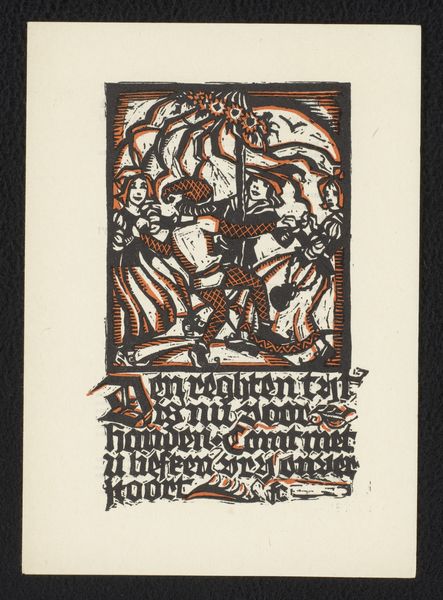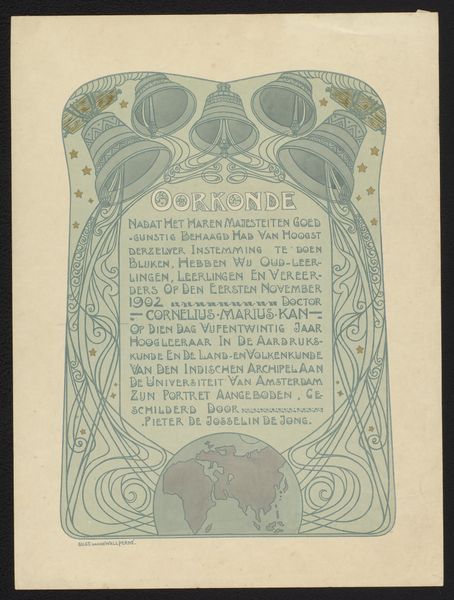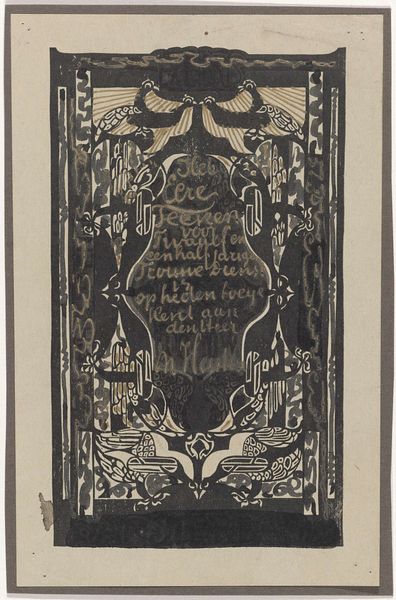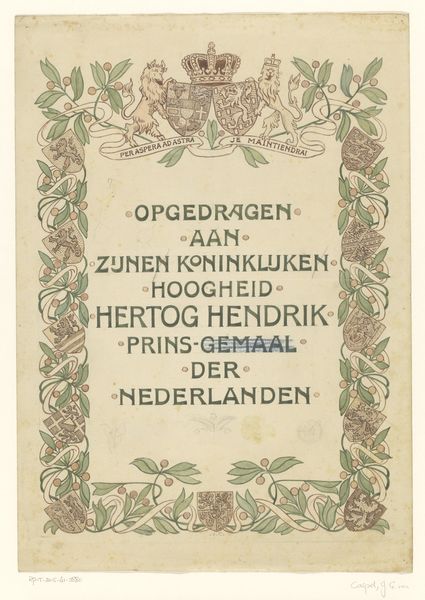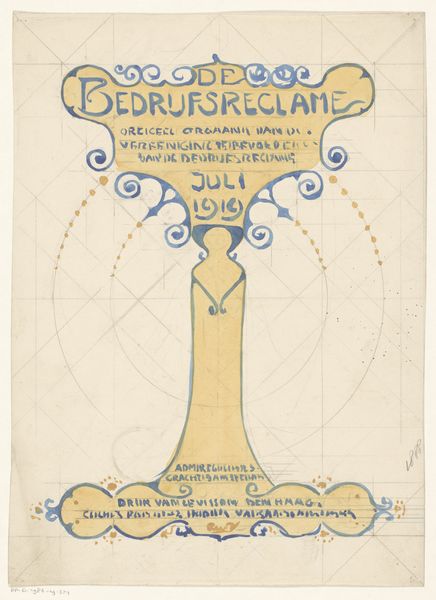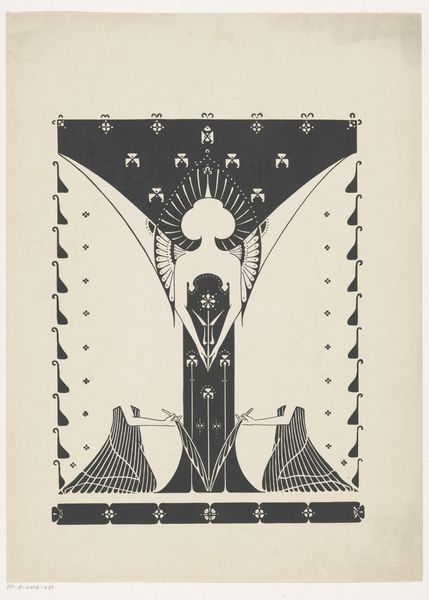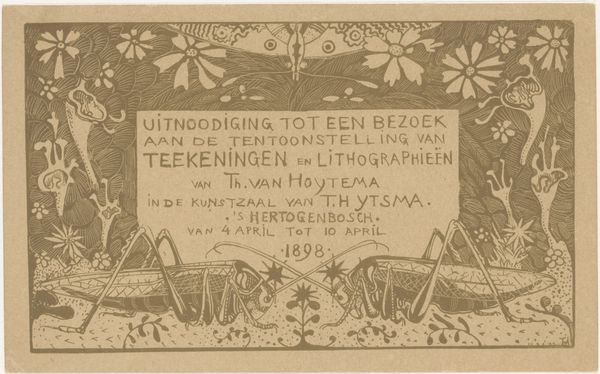
Bandontwerp voor: Thérèse Hoven, Uit het land der klapperboomen, 1897 before 1897
0:00
0:00
willemwenckebach
Rijksmuseum
drawing, graphic-art, paper, typography, ink
#
drawing
#
graphic-art
#
quirky illustration
#
toned paper
#
art-nouveau
#
blue ink drawing
#
childish illustration
#
old engraving style
#
paper
#
personal sketchbook
#
typography
#
ink
#
geometric
#
pen-ink sketch
#
line
#
sketchbook drawing
#
decorative-art
#
cartoon carciture
#
sketchbook art
Dimensions: height 293 mm, width 216 mm
Copyright: Rijks Museum: Open Domain
Editor: This is a preparatory drawing by Willem Wenckebach for *Uit het land der klapperboomen* by Thérèse Hoven, dating from before 1897. It’s pen and ink on paper, and what strikes me is how decorative it is – the lines almost vibrate with energy. What do you see when you look at this piece? Curator: I see a fascinating intersection of artistic labor, commercial demand and emerging artistic movements. Wenckebach wasn't just making 'art'; he was producing a commodity, a book cover intended to attract consumers. Consider the Art Nouveau style – it wasn't simply aesthetic, but deeply intertwined with industrial production and consumption. How do you think the materials themselves—paper, ink, and the very process of drawing versus printing—influenced the final product and its reception? Editor: That's a great point about industrial production. It’s interesting to think of the drawing as a step in the process of mass production. It’s like he's mediating art and commerce. Curator: Exactly. The labor involved in creating the original drawing – Wenckebach’s hand, the ink he used – would be very different from the labor of mass-producing the final book. Think of the printers, the binders, the distributors – all part of the material reality of this image. How does this change your initial view of the "vibrating lines"? Are they simply decorative, or do they suggest something more about the world of work and industry surrounding their creation? Editor: I see what you mean. Thinking about it as a mass-produced image shifts the focus away from the pure aesthetic and highlights the work and systems behind it. Curator: Precisely! It's not just about the beauty of the design, but about understanding the economic and material circumstances that made it possible. Hopefully this shifts the discussion from “art” to labor, consumption, and materiality in fin-de-siecle Netherlands. Editor: Definitely. Now I’m considering all of the processes behind this, and not just what appears in the image. Thanks for the insight.
Comments
No comments
Be the first to comment and join the conversation on the ultimate creative platform.


